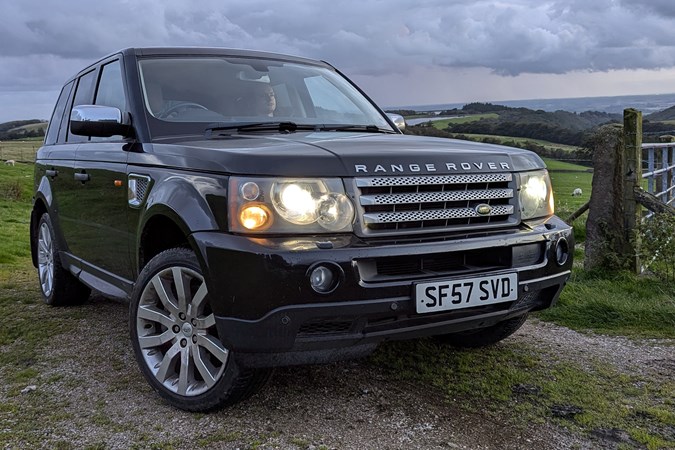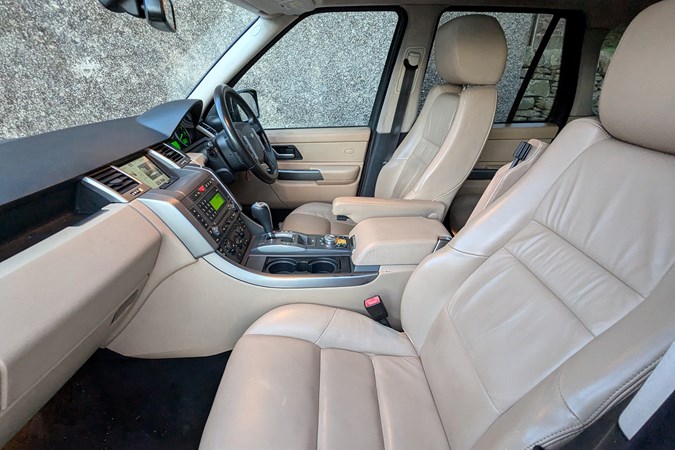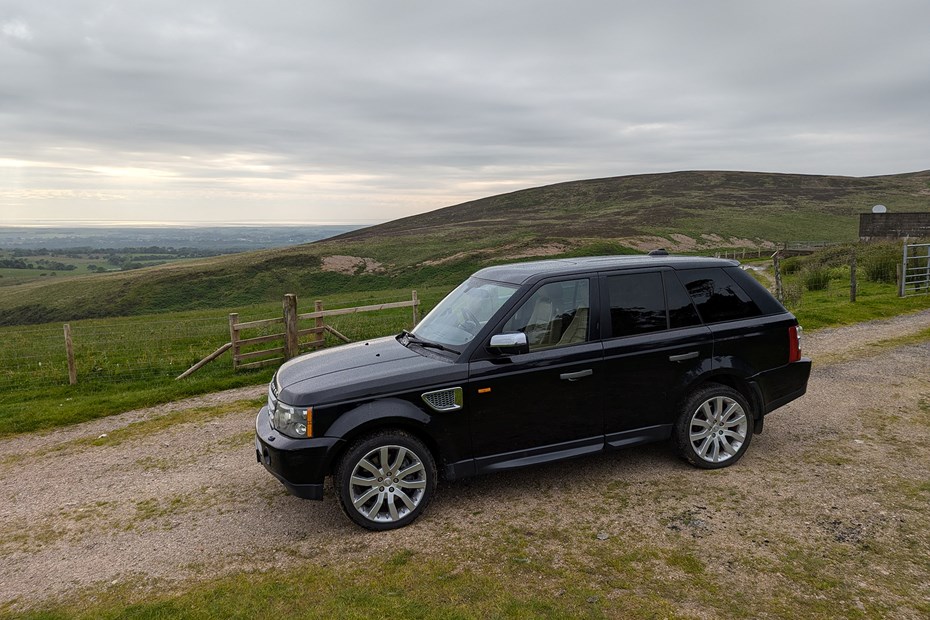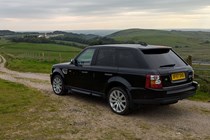Ryan came back from his finance superhero conference and decided to get all assertive and take a holiday (how dare he!), so I’m sidling in to do this week’s what could possibly go wrong again. This is my favourite used car series because we pick a potential bargain of the century, with added jeopardy.
This is a subject I have a lot to talk about. The L320-generation Range Rover Sport: the blinged-up, bad-boy brother of the towering Range Rover (L322), but with more street swagger than country club polish. It launched in 2005 with a supercharged V8, Nürburgring-honed handling and the same elevated driving position as the full-fat Rangie. What’s not to like?
New, this beast could set you back £60,000 or more – and that’s before ticking the boxes for the big wheels, ivory leather and rear entertainment system. But today? You can find one for less than the price of a 10-year old Dacia Sandero. Tempting, right?
Just don’t forget your nerves of steel. While it oozes presence and V8 grunt, it’s also a poster child for why people are scared of old luxury SUVs. A good one is fabulous. A bad one will introduce you to your bank manager. Repeatedly.
Still fancy one? You brave, brave soul
Buyers had choices. The 2.7-litre TDV6 was popular, though a little sluggish. The later 3.0-litre SDV6 improved things considerably. But the headline act was always the supercharged V8 – a soulful lump that delivered 390hp and a proper soundtrack to match. Later on, it was replaced by a 5.0-litre version with even more power, if not more sense.
Ride comfort was solid for the time, especially on standard air suspension. Handling? Surprisingly nimble for such a heavy car, helped by firm damping and clever electronics. And inside, even early cars still feel pretty plush, with decent tech and build quality that – when it’s not broken – still impresses.
In short, the L320 pulled off that rare trick: it was aspirational but attainable, luxurious yet usable, and had enough street cred to pull up anywhere and not feel out of place. But…

...what could possibly go wrong? Where do we start? The big concern with the Range Rover Sport is reliability – or lack thereof. Air suspension faults are common, with compressors failing and ride heights getting confused. Don’t be surprised to see dashboard warnings that wouldn’t look out of place on a Boeing 747.
The turbocharged diesels, especially the early 2.7 TDV6, have a reputation for lunching their turbos and dropping crankshafts. That means the 3.0 SDV6 is the safer bet, although it’s hardly immune to issues. And those V8s? Glorious when working, terrifying when they’re not. Timing chains on the 5.0 V8 can stretch, and repairs aren’t for the faint-hearted.
Electrical gremlins also love to make an appearance. Infotainment systems glitch, parking sensors pack up, and air-con panels do their own thing. Rust isn’t common, but worn suspension bushes, tired gearboxes and rear diffs failing definitely are.
Yet, if you find one that’s been pampered, maintained regardless of cost and serviced by a specialist who knows what they’re doing, it can still feel like a mini Bentley SUV. Just avoid the £3,000 shed and focus on buying the best you can afford. £5-10k is the ballpark for a decent late 3.0 TDV6 with history. Double that if you want a sorted Supercharged model.
To find out more, read our full Range Rover Sport review and buying guide
Pros
- Looks the business, still turns heads
- Big-spec cars are everywhere
- Drives well for a heavy SUV
Cons
- Fixing a bad one is ruinous
- Fuel and tax bills can be laughable
FAQs: What you need to know about a used Range Rover Sport
-
Is the Range Rover Sport reliable?
It can be – but you’ll need full history, evidence of regular servicing, and preferably a specialist who’s cared for it. Cheap ones are usually cheap for a reason.
-
Which is the best engine?
The 3.0-litre SDV6 is the sensible all-rounder. Avoid the 2.7 unless it’s very cheap and well maintained. The V8s are a joy, but running costs are sky high.
-
How much does it cost to run?
Expect 25mpg on the diesels, single figures if you’re heavy-footed in a supercharged V8. Servicing and parts can be pricey, especially suspension and drivetrain components.

Should you buy a Range Rover Sport (L320)?
I have – and I’ve lived to tell the tale. Just. Mine was a TDV8 diesel with all the toys, bought cheaply and optimistically. Within weeks, the air suspension had sulked, the alternator packed in, the clever diffs stopped being diffs, and I had my local Land Rover specialist on speed dial. It taught me an important lesson: buy the best you can, not the cheapest you find.
But when it worked, it was magic. You feel like you’ve made it. It wafts, it thunders, it commands the road like few others. Today’s SUVs often feel sterile and samey – this has old-school charm and bags of character. My advice – spend £5,000-plus and get the most storied example you can find. Me? I sold it at a loss, and now I drive a Porsche Cayenne (yeah, I know).
If you’re brave, sensible-ish with your budget, and prepared to treat it like a needy but rewarding pet, it could be one of the best used buys out there. Just don’t say I didn’t warn you.
Just so you know, we may receive a commission or other compensation from the links on this website - read why you should trust us.









